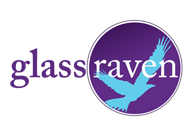I often get asked when designing WordPress websites what the different user permissions mean – and what access they should give to the people who contribute to their website content. So here is a summary of the standard WordPress user levels and what access rights come with them by default:
Administrator
This is the top level access – they will have access to everything on the website, no limits!
If we have designed you a WordPress website – this is the access level that will be granted to you to enable you to maintain your website.
Editor
An editor can write blog posts and pages, and edit any of the other posts or pages on the website. They can upload files / media and also assist in administering the comments that are made on the blog.
Author
Authors can write blog new posts (not pages), edit & publish their own posts and upload files / media.
Contributor
A contributor is able to write new blog posts and edit / delete their own posts, but an editor or administrator is required to authorise new posts before they are displayed live on the website.
Subscriber
This is the basic status of any new user. They are able to comment on the site (if you have comments turned on) and manage their own profile details but do not have any other access.
With some websites (for example www.eastanglianwines.co.uk) we have created all content on the website to be members only – so the subscriber status gives people access to view the content.
There are other user status that are introduced when certain plugins are added into WordPress – for example BuddyPress and bbPress have additional status specific to them. But the above are the standard user permissions included within your WordPress blog.

